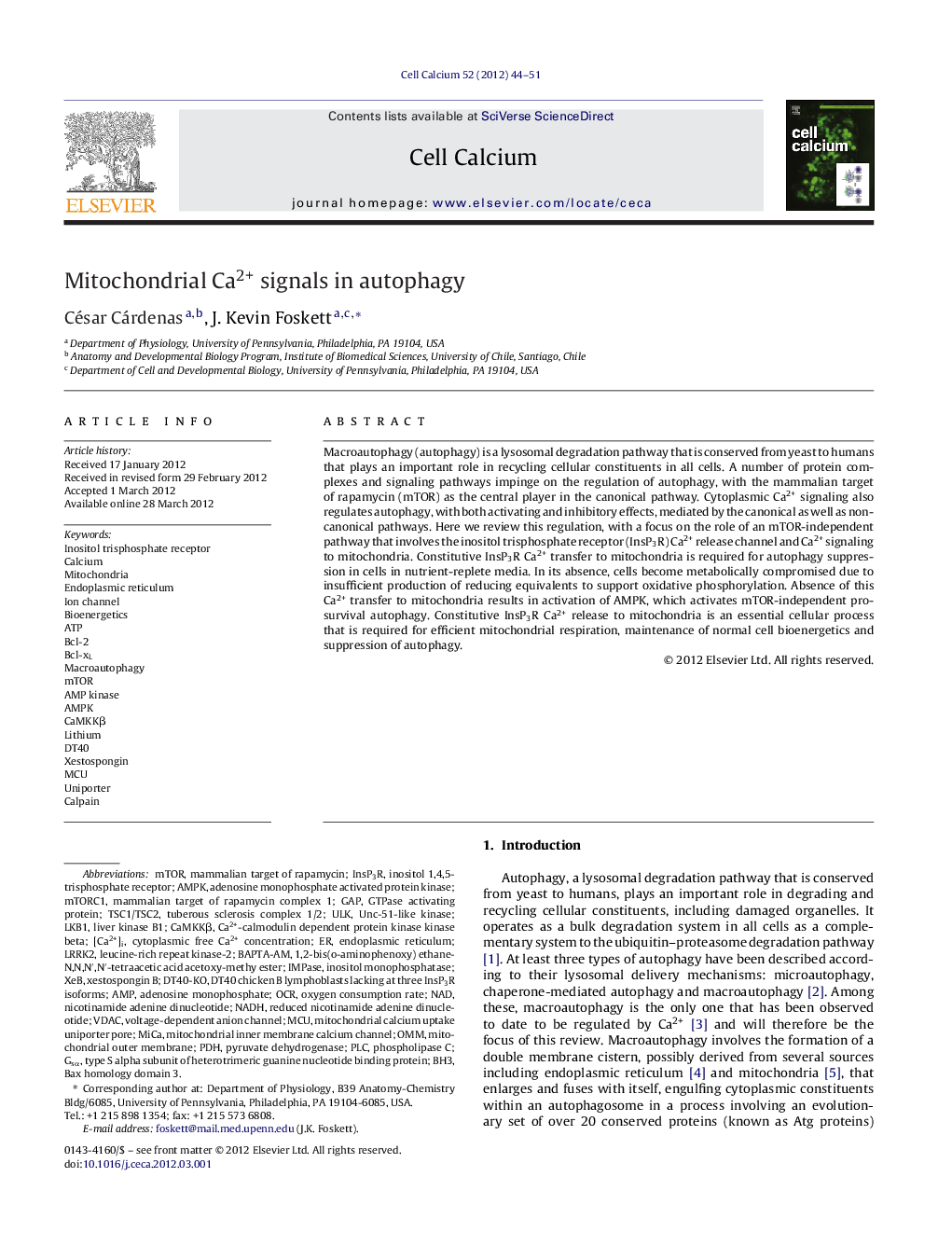| Article ID | Journal | Published Year | Pages | File Type |
|---|---|---|---|---|
| 10926279 | Cell Calcium | 2012 | 8 Pages |
Abstract
Macroautophagy (autophagy) is a lysosomal degradation pathway that is conserved from yeast to humans that plays an important role in recycling cellular constituents in all cells. A number of protein complexes and signaling pathways impinge on the regulation of autophagy, with the mammalian target of rapamycin (mTOR) as the central player in the canonical pathway. Cytoplasmic Ca2+ signaling also regulates autophagy, with both activating and inhibitory effects, mediated by the canonical as well as non-canonical pathways. Here we review this regulation, with a focus on the role of an mTOR-independent pathway that involves the inositol trisphosphate receptor (InsP3R) Ca2+ release channel and Ca2+ signaling to mitochondria. Constitutive InsP3R Ca2+ transfer to mitochondria is required for autophagy suppression in cells in nutrient-replete media. In its absence, cells become metabolically compromised due to insufficient production of reducing equivalents to support oxidative phosphorylation. Absence of this Ca2+ transfer to mitochondria results in activation of AMPK, which activates mTOR-independent pro-survival autophagy. Constitutive InsP3R Ca2+ release to mitochondria is an essential cellular process that is required for efficient mitochondrial respiration, maintenance of normal cell bioenergetics and suppression of autophagy.
Keywords
AMP kinasePLCBcl-xLVDACMacroautophagymTORC1OCRPDHGsαLKB1BH3CaMKKβInsP3ROMMInositol monophosphataseUNC-51-like kinaseIMPasecytoplasmic free Ca2+ concentrationLRRK2AMPKAMPmTORMCUBcl-2LithiumDT40ULKGTPase Activating Protein[Ca2+]iATPadenosine monophosphateAdenosine monophosphate activated protein kinaseBAPTA-AMBioenergeticsendoplasmic reticulumGAPmitochondrial outer membranephospholipase CMitochondriaOxygen consumption rateMicaNADHNADUniporternicotinamide adenine dinucleotidemammalian target of rapamycinMammalian target of rapamycin complex 1pyruvate dehydrogenaseCalpainvoltage-dependent anion channelIon channelreduced nicotinamide adenine dinucleotideCalciumliver kinase B1Inositol 1,4,5-trisphosphate receptorInositol trisphosphate receptor
Related Topics
Life Sciences
Biochemistry, Genetics and Molecular Biology
Cell Biology
Authors
César Cárdenas, J. Kevin Foskett,
